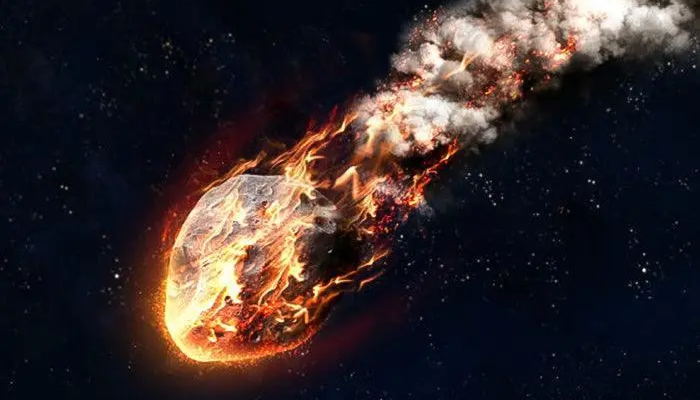For as long as I can remember, meteorites have fascinated humanity. These fragments from outer space carry an almost mystical presence that sparks awe and curiosity. People throughout history have been drawn to them, seeing in these celestial stones a connection to something greater than ourselves. My own journey into the world of meteorites has been one of discovery, wonder, and a deepening sense of how these cosmic visitors reflect our human desires, fears, and longing for meaning.
Imagine the moment when a meteorite streaks across the sky, lighting up the night with a fiery glow before crashing into the earth with a thunderous roar. That spectacle has inspired countless stories and reverence across cultures. In ancient times, meteorites were often worshiped as gifts from the gods or symbols of divine power.
Take the Sami people of Scandinavia, for example. They crafted tools from meteorite iron and used them in rituals praying for a bountiful harvest. Across the globe, Australian Aboriginal communities embedded meteorites in sacred sites, honoring them in ceremonies that connected earth and sky. Ancient peoples in India, China, and Mongolia engraved images of birds like eagles onto meteorites, believing these markings represented celestial origins and spiritual authority.
In ancient Egypt, meteorites were seen as divine gifts. The metal was associated with royalty and godly power. It was soon discovered that this celestial iron could be fashioned into weapons and tools. The famed Pyramid Texts, some of the oldest religious writings, describe kings whose bones were made of iron and whose essence was linked to immortal stars.
Western ancient civilizations also embraced meteorite worship. The temples of Artemis and the grand Elagabalium built by the Roman Emperor Elagabalus housed revered meteorites. Romans believed that stones fallen from the sky held supernatural forces. Richard Norton, a scholar who has taught theology in England, Sudan, and Zimbabwe, highlighted that the sacred stone at Delphi, known as the Omphalos, was thought to be created by the god Cronus and marked the world’s spiritual center.
One story that stayed with me is about the meteorite from Pessinus in Phrygia, worshiped as the sacred stone of Cybele, the goddess of fertility. After Rome conquered Phrygia, they transported the meteorite to Rome, where it was venerated for centuries. This tale shows how deeply meteorites were embedded in human spirituality and culture.
Even within monotheistic traditions, traces of meteorite reverence remain. In Hebrew, meteorites were called “betyls,” meaning “the house of God.” This belief underscores how these stones served as earthly vessels of divine presence.
The use of meteorites extended beyond spiritual significance. They became part of daily life and art. Inuit people fashioned jewelry and tools from meteorites, which served as a vital iron source for making axes and bracelets. One fascinating artifact is a 10.6-kilogram statue found in Siberia, made from iron meteorite, depicting the Hindu god Vishnu. This statue illustrates a remarkable blend of religious art and cosmic science.
Archaeological discoveries continue to amaze. In 1911, an iron bead was uncovered near Cairo, dating back over 5,000 years. Analysis showed it was crafted from meteorite iron, recognizable by its unique crystalline Widmanstätten patterns. These textures form only when metals cool slowly in space. These intricate patterns are impossible to recreate on Earth and highlight the extraordinary origin of this ancient bead.
Today, meteorite fragments are prized in the world of high-end jewelry and watchmaking. The Muonionalusta meteorite, found in Sweden and estimated to have fallen nearly a million years ago near the Arctic Circle, is coveted for its distinctive patterns and metallic beauty. Luxury brands incorporate this rare metal into watch dials, rings, and pendants, creating pieces that carry both cosmic history and exquisite craftsmanship.
I find myself drawn to meteorite jewelry not just for its beauty but for the powerful symbolism it carries. Wearing a meteorite piece feels like carrying a piece of the universe’s story. The nickel content in these stones is believed to purify the blood and align the wearer’s spirit with cosmic energy. It is a poetic reminder that we are connected to the stars and the vast cosmos.
As someone who appreciates both science and spirituality, I am inspired by how meteorites bridge these worlds. They are physical remnants of the universe’s birth and destruction, messengers of change and renewal. Across civilizations from the Maya to the Vikings, from the Egyptians to the indigenous peoples of the Arctic, humanity has sought these stones as tokens of cosmic connection.
Meteorites remind me that we all come from the depths of space, born from starstuff, and that eventually, we will return to that cosmic source. Holding a meteorite is like holding a fragment of our shared origin story. It encourages me to explore not only the universe outside but also the universe within.
This journey with meteorites has deepened my sense of wonder and belonging. Each stone carries a silent story of cosmic travel, earthly impact, and human reverence. They challenge us to think bigger, to see ourselves as part of an immense, ongoing dance of creation and transformation.
Meteorites are more than rocks from the sky. They are ancient storytellers, spiritual anchors, and timeless reminders that the universe is not separate from us but a part of who we are. And in that connection, I find a profound sense of peace and inspiration.

